|
The Mammoth Book of Extreme Science Fiction

The 9/11 Commission Report: Final Report of the National Commission on Terrorist Attacks Upon the United States

Spanish Civil War

Gerry Anderson's TV 21: Volume One: Adventure in the 21st Century
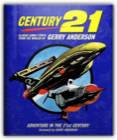
Gerry Anderson's UFO: Technical Manual
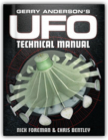
Senor Vivo and the Coca Lord

Senor Vivo and the Coca Lord is the second novel in a trilogy set in South America. It won a Commonwealth Writers Prize in 1992. The Troublesome Offspring of Cardinal Guzman

But for Cardinal Guzman, a man tormented by his own private demons, their stupendous, hedonistic fiestas represent the epicenter of all heresies. Heresies that must be challenged with a horrifying new inquisition destined to climax in a spectacular confrontation… The second part of a trilogy, following The War of Don Emmanuel's Nether Parts, which won the Commonwealth Writers Prize for Best First Fiction. The War of Don Emmanuel's Nether Parts

Despite visiting plagues of laughing fits and giant cats upon the troops, the villagers know that to escape the cruel and unusual tortures planned for them, they must run. Thus they plan to head for the mountains and start a new and convivial civilization. The War of Don Emmanuel’s Nether Parts is the first novel in a trilogy set in South America. It won a Commonwealth Writers Prize in 1991. Bomber Boys: Fighting Back 1940-1945

The Precipice The Asteroid Wars 1

Shakespeare: The World as a Stage

Gordon Is a Moron: The Definitive and Objective Analysis of Gordon Brown's Decade as Chancellor of the Exchequer

Lockheed's Blackworld Skunk Works: The U2, SR-71 and F-117

Spitfire Flying Legend

Starman: The Truth Behind the Legend of Yuri Gagarin

Using csh & tcsh
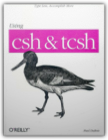
Overcoming Low Self-esteem: Self-help Guide Using Cognitive Behavioural Techniques

Cold Mountain

Enemy Coast Ahead - Uncensored: The Real Guy Gibson

Giger's Alien
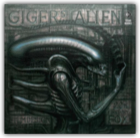
Nissan Almera and Tino Petrol Service and Repair Manual
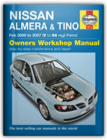
Bad Science

FIRE BY NIGHT: The Dramatic Story of One Pathfinder Crew and Black Thursday,16/17 December 1943

When she was very young, the author was captivated by the story her father, Joe Mack, repeatedly told her about his astonishing rescue from a crashed and burning Lancaster one night in 1943. As an adult she decided to find out what happened to his aircraft and the countless others returning from operations that same dreadful night...She writes from the heart, honestly and at times lyrically and her thorough research uncovers the harsh realities of warfare, the failure of procedures and, worst of all, her father's shocking secret. King Arthur and his Knights of the Round Table
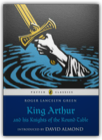
The Curious Incident of the Dog in the Night-time

Not Much of an Engineer

Quiet the Mind

Overcoming Anxiety

On the Road

The Soul Of A New Machine

These days, we are used to the "total commitment" philosophy of managing technical creation, but Kidder was surprised and even a little alarmed at the obsessions and compulsions he found. From in-house political struggles to workers being permitted to tease management to marathon 24-hour work sessions, The Soul of a New Machine explores concepts that already seem familiar, even old-hat, less than 20 years later. Kidder plainly admires his subjects; while he admits to hopeless confusion about their work, he finds their dedication heroic. The reader wonders, though, what will become of it all, now and in the future. —Rob Lightner Tommy Atkins

Faceless Killers

Firewall

Firewall continues Mankell's unvarnished portraits of modern life, in which society and all its institutions (not least the family) are on the edge. Here, his long-term protagonist, Inspector Kurt Wallander, moves into new area of crime: cyberspace. Various deaths have occurred: the user of a cash machine, a taxi driver killed by two young girls. The country is plunged into blackout by an electricity failure, and a grim find is made at a power station. What's the connection? Wallander finds himself on the trail of cyber terrorists with shady anarchic aims. But can his own malfunctioning team of coppers pull together to help catch them—or is there a fifth columnist in the police? Plotting here is impeccable, although Firewall may not be a prime entry point for those new to Mankell. But Wallander (here worried about his diabetes and failure to lose weight) is one of the great literary coppers: enthusiasts need not hesitate. —Barry Forshaw Sidetracked

Sidetracked, the fifth of Henning Mankell's acclaimed Kurt Wallander mysteries, and the second to be translated into English, is an engrossing police procedural. The hard-boiled Kurt Wallander has softened slightly since he was first introduced in Faceless Killers, the first title in the series. He drinks less, has more functional relationships and has developed a faith in his investigative team. Despite this, it is his other qualities as a character, his philosophical angst and his intuitive pursuit of hunches, which drive this novel as Wallander struggles to discover the leads that will trap the killer. Mankell manages to squeeze in serious comments on the state of Swedish society. The over-stretched police force, child prostitution and the corruption of high politics, all come under the scrutiny of Wallander's wearied gaze as he struggles to come to terms with the new violence of his society. This is a dark novel peppered with genuinely nasty violence, but it is Wallander's struggle to uncover the truth and face his own demons that provide the real thrills. —Iain Robinson One Step Behind

The Dogs of Riga

The Fifth Woman

The Man Who Smiled

The Pyramid

So the time is probably right for The Pyramid, even though those of us who enjoyed putting out the word about Mankell will have to relinquish their proselytising role. Wallander first appeared in Faceless in 1991, when he was a senior police officer just out of his 30s and with his private life in chaos. The stories here describe his early years: the events, the people and the crimes that forged the man we first met in Faceless. We encounter Wallander as a beat cop attempting to crack a murder in his spare time; we follow him in his tentative first steps with Mona, the woman he has decided to marry (his wife, of course, had left him by the time of the events in that first book), and we are shown why his relationship with his father is quite so fractious. The elements that make the full length Wallander novels so successful are all here in microcosm: a cool, dispassionate treatment of crime, the understated evocation of the Scandinavian locales; and (best of all) the puzzling, fascinating character of the tenacious cop at the centre of the narrative. Mankell fans may prefer the full-length novels (and not every piece here is vintage Mankell), but they will feel the need to catch up with the insights provided by these striking stories. —Barry Forshaw Seven Troop

Hostile Skies: My Falklands Air War

Learning the bash Shell: Unix Shell Programming
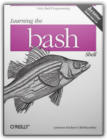
As any good programmer knows, the first thing users of the Linux operating system come face to face with is the shell the UNIX term for a user interface to the system. In other words, it's what lets you communicate with the computer via the keyboard and display. Mastering the bash shell might sound fairly simple but it isn't. In truth, there are many complexities that need careful explanation, which is just what "Learning the bash Shell" provides. If you are new to shell programming, the book provides an excellent introduction, covering everything from the most basic to the most advanced features. And if you've been writing shell scripts for years, it offers a great way to find out what the new shell offers. "Learning the bash Shell" is also full of practical examples of shell commands and programs that will make everyday use of Linux that much easier. With this book, programmers will learn: How to install bash as your login shell The basics of interactive shell use, including UNIX file and directory structures, standard I/O, and background jobs Command line editing, history substitution, and key bindings How to customize your shell environment without programming The nuts and bolts of basic shell programming, flow control structures, command-line options and typed variables Process handling, from job control to processes, coroutines andsubshells Debugging techniques, such as trace and verbose modes Techniques for implementing system-wide shell customization and features related to system security Integrated Circuit 555 Projects

The Complete Idiot's Guide to Geocaching

With The Complete Idiots Guide to Geocaching you won't get lost on the trail. With expert tips, over 302 pages, from the founders and operators of the most popular geocaching website you will learn how to participate in this gaming adventure. ,br>In this Complete Idiot's Guide, you get: Information on how to create your own online geocaching profile; Advise on purchasing and operating a GPS unit - or using a map and compass - to locate caches; Tips on how to geocache in populated or remote areas without appearing suspicious to residents and authorities. Written by the Editors and Staff of Geocaching.com and Jack Peters Mini : Purchase and Restoration Guide

C Pocket Reference

Revelation Space
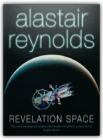
Sylveste is the only man ever to return alive and sane from a Shroud, an enclave in space protected by awesome gravity-warping defenses: "a folding a billion times less severe should have required more energy than was stored in the entire rest-mass of the galaxy." Now an intuition he doesn't understand makes him explore the dead world Resurgam, whose birdlike natives long ago tripped some booby trap that made their own sun erupt in a deadly flare. Meanwhile, the vast, decaying lightship Nostalgia for Infinity is coming for Sylveste, whose dead father (in AI simulation) could perhaps help the Captain, frozen near absolute zero yet still suffering monstrous transformation by nanotech plague. Most of Infinity's tiny crew have hidden agendas—Khouri the reluctant contract assassin believes she must kill Sylveste to save humanity—and there are two bodiless stowaways, one no longer human and one never human. Shocking truths emerge from bluff, betrayal, and ingenious lies. The trail leads to a neutron star where an orbiting alien construct has defenses to challenge the Infinity's planet-wrecking superweapons. At the heart of this artifact, the final revelations detonate—most satisfyingly. Dense with information and incident, this longish novel has no surplus fat and seems almost too short. A sparkling SF debut. —David Langford, Amazon.co.uk Redemption Ark
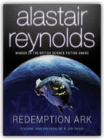
The only hope for humanity lies in the recovery of a secret cache of doomsday weapons-and a renegade named Clavain is determined to find them. But other factions want the weapons for their own devices. And the weapons themselves have another agenda altogether... Galactic North

With eight short stories and novellas- including three original to this collection- Galactic North imparts the centuries-spanning events that have produced the dark and turbulent world of Revelation Space. Centuries from now, the basic right to expand human intelligence-beyond its natural limits-has become a war-worthy cause for the Demarchists and Conjoiners. Only vast lighthugger starships bind these squabbling colonies together, manned by the panicky and paranoid Ultras. And the hyperpigs just try to keep their heads down. The rich get richer. And everyone tries not to think about the worrying number of extinct alien civilizations turning up on the outer reaches of settled space...because who's to say that humanity won't be next? Chasm City

Commodity Derivatives: Markets and Applications

Using structures unique to the individual market, each chapter includes an explanation of the commodity and an analysis of its physical market, discussion on the typical patterns of demand and supply and the main factors that will influence the price of the commodity, and the main products. Each chapter focuses on how the products could be used along the physical supply chain and seeks to identify the main market risks and how they can be hedged. The book then brings into perspective how the structuring banks hedge their own resultant exposure and examines the attraction of OTC investment structures for the wholesale market. Commodity Derivatives: Markets and Applications is essential reading for those wishing to learn about the main features of the commodity markets, the mechanics of derivatives, and how they are applied. Tescopoly: How One Shop Came Out on Top and Why It Matters

Homicide: A Year on the Killing Streets

Exceptional C++: 47 Engineering Puzzles, Programming Problems, and Solutions
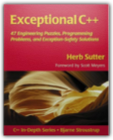
Based on the author's Guru of the Week Web column, this book poses a series of challenging questions on the inner workings of C++, centering around generic programming with the Standard Template Library (STL), exception handling, memory management, and class design. Even if you think you know C++ well, most of these problems will teach you something more about the language and how to write more robust classes that are "exception safe" (meaning they don't throw any handled exceptions or leak resources). Don't think this is just "language lawyering," though. The author's explanations stress sound programming principles (favoring simplicity) and idioms (such as the Pimpl idiom for class design that promotes faster compile times and better maintainability, or using "smart" auto_ptrs with STL.) Judging from the range and depth of these examples, Sutter's command of the inner workings of C++ is impressive, and he does an excellent job of conveying this expertise without jargon or a lot of theory. After reading this book, C++ designers will learn several "best practices" of how to write robust, efficient classes that are "exception safe." Chances are you'll gain a better understanding of memory management techniques and working with STL too. For the experienced developer seeking leading-edge knowledge of some of the best ways to use C++, Exceptional C++ is both a challenging and truly worthwhile source of information. —Richard Dragan Topics covered: Advanced C++ programming tutorial, generic programming, tips for string classes, containers and STL, temporary objects, exception-safe code tutorial, virtual functions, class inheritance, the Pimpl idiom, namespaces, memory management, C++ memory areas, overloading new and delete, using smart pointer with auto_ptr, using const, casts, and hints for better performance and code maintainability. On Land, Sea and in the Air: Action Man

Collins Gem Fat-Burning Diet: The Healthy, High-Protein Way to Lose Weight

Building Embedded Linux Systems
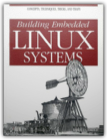
|


Rob Schofield
Collection Total:
266 Items
266 Items
Last Updated:
Aug 9, 2013
Aug 9, 2013
 Made with Delicious Library
Made with Delicious Library